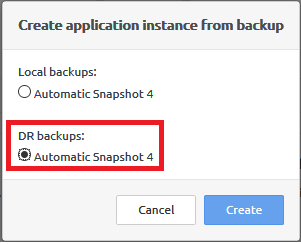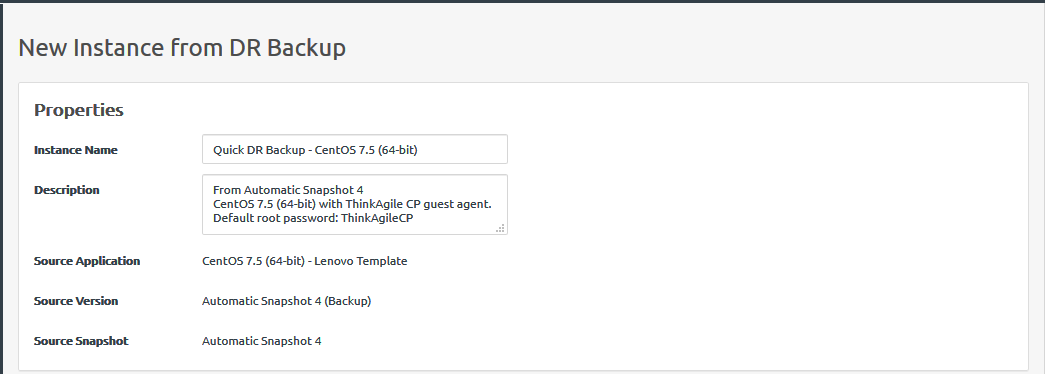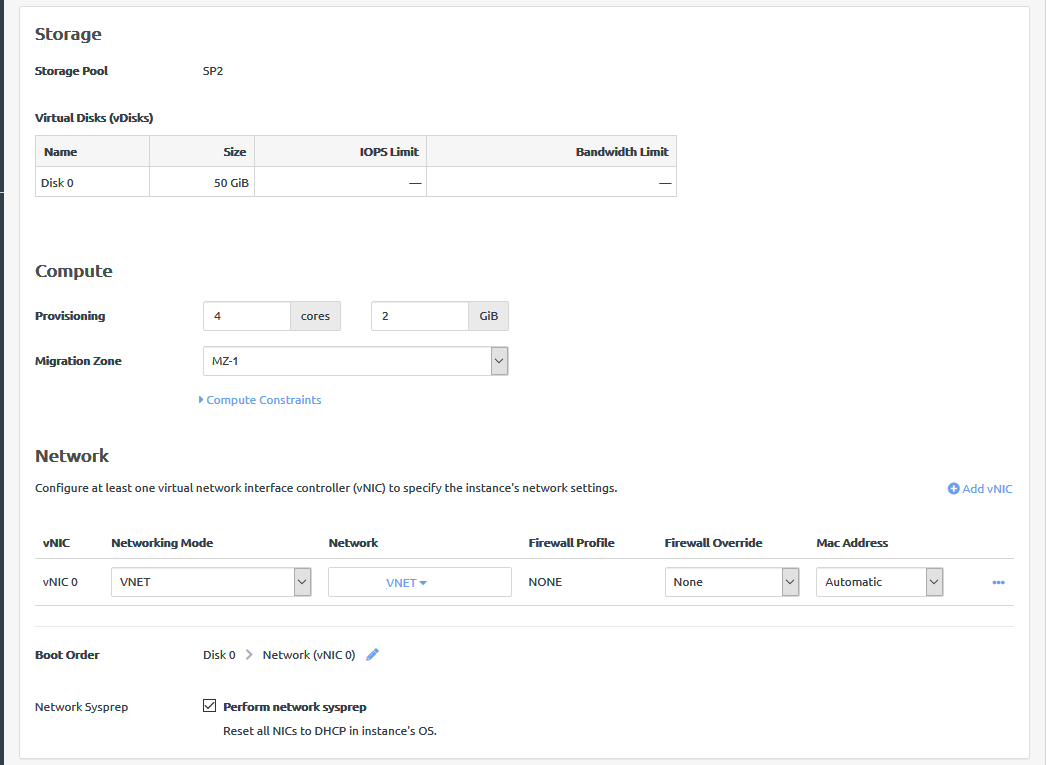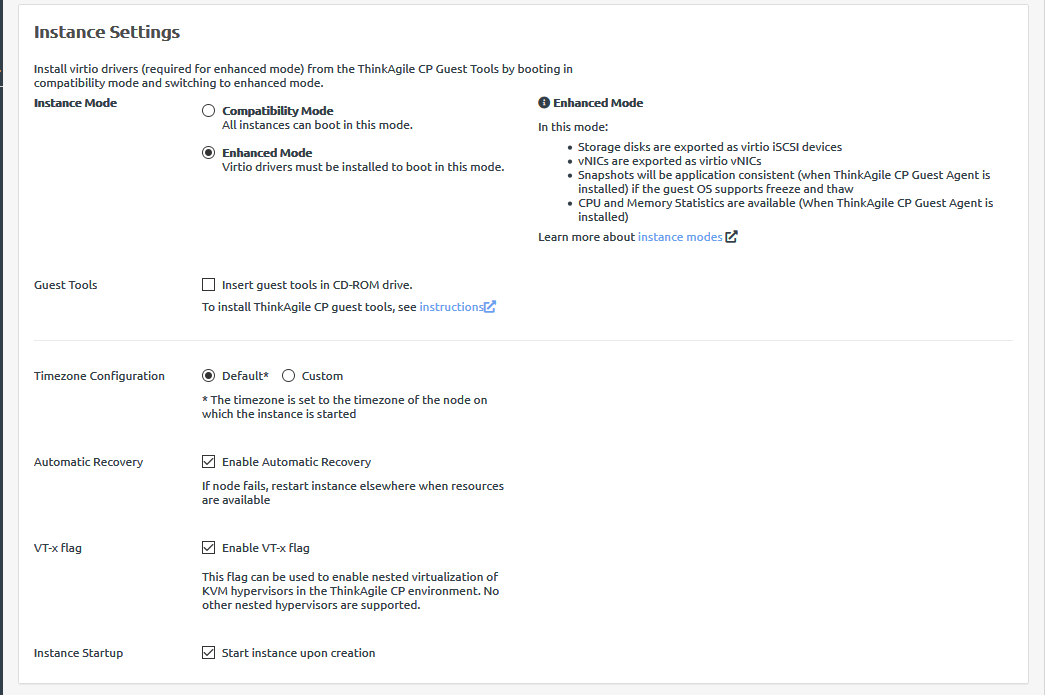To restore an instance from a quick DR backup, you actually create a new instance from the quick DR backup. The state of the new instance is the same state of the original instance when the quick DR backup was taken. You cannot directly restore an instance from a quick DR backup because the instance and the backup are in different storage pools.
Complete the following steps to create a new instance from a quick DR backup:
- Log in to the ThinkAgile CP Cloud Controller as an infrastructure admin or VDC manager user.
- Navigate to the details page for your application instance, and click the Backups tab.
- Click the action menu (
 ) for the quick DR backup that you want to restore. Then click New application instance.
) for the quick DR backup that you want to restore. Then click New application instance.Figure 1. Backups action menu - new application instance option 
- Choose the DR backup as the backup to be used for creating the new instance. Then click Create.
Figure 2. Create application instance from backup dialog 
- In the Properties section of the page, enter a name (required) and a description (optional) for the new application instance. The new name must be unique across all application instances in the associated virtual datacenter.
Figure 3. New Instance from DR Backup dialog - Properties section 
- In the Virtual Datacenter section, configure the following fields:
Figure 4. New Instance from DR Backup dialog - Virtual Datacenter section 
- Select the virtual datacenter where the instance should reside and get resources. The virtual datacenter selection determines the migration zone and storage pool resources available for the application instance.
- Optionally, select an application group (which are used to organize application instances in a virtual datacenter) and then specify the number of instantiations you want to include in this group.
- Specify the number of instances to be created.
- Configure the settings for the compute and networking resources.
The new instance will be created in the same storage pool where the current quick DR backup is located.
Figure 5. New Instance from DR Backup dialog - Resources section 
- Define the VM provisioning for this instance by specifying the CPU (number of cores) and Memory in GB.
- Select the migration zone from which the application instance will get its compute resources.
- If the instance requires a specific compute category or tag, expand Compute Constraints and add the category and tags.
- Select a networking mode for the instance and select a virtual network from the drop-down menu.
- Edit the Boot Order if needed. The application instance will attempt to boot in the sequence you define.
- Click Perform network sysprep if needed to reset all NICs to DHCP in the instance operating system.
- Configure the settings for the new instance.
Figure 6. New Instance from DR Backup dialog - Instance Settings section 
- Choose the instance mode.
The instance mode defaults to the source instance when creating an instance from a quick DR backup. For more information about these modes, see the following topic:
Understand instance modes
- Compatibility Mode. All instances can boot in this mode.
- Enhanced Mode. Virtio drivers must be installed to boot in this mode.
- Click Insert guest tools in CD-ROM to insert guest tools.
- Determine the time zone to be used for the instance.
- Default. The time zone is set to the time zone of the node on which the instance starts.
- Custom. You can set the time zone for the application instance by selecting the time zone area and location.
- Make sure that Enable Automatic Recovery is selected to enable automatic recovery, which specifies to restart the instance where resources are available if the node fails.
- Make sure that Enable VT-x flag is selected to enable nested virtualization of KVM hypervisors in your ThinkAgile CP environment.
- Make sure that Start instance upon creation is selected to have the instance started when it is created.
- Click Create Instance.
The new instance is started and is listed on the VDC Instances page for your VDC.
Figure 7. VDC Instances page displaying new instance 







